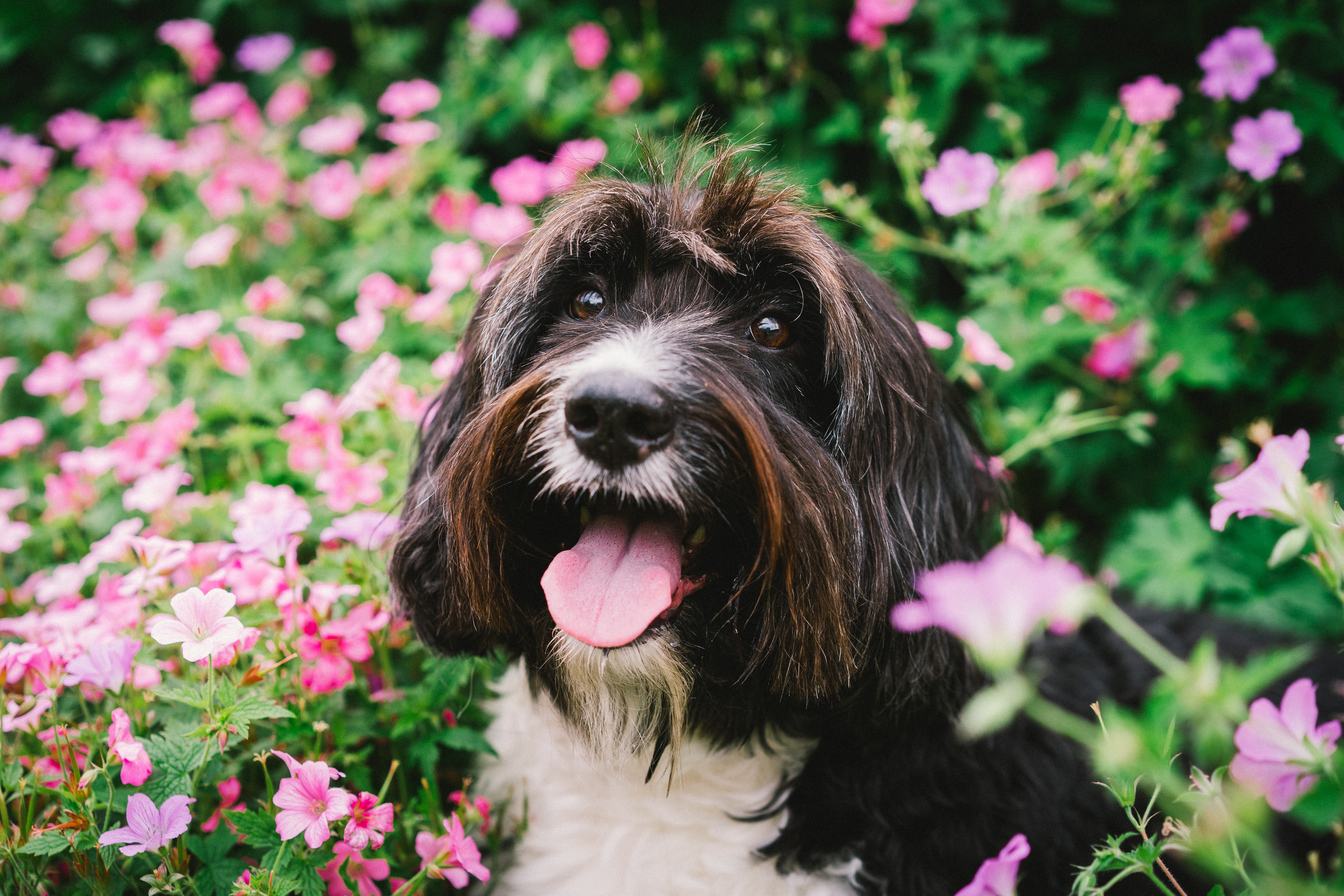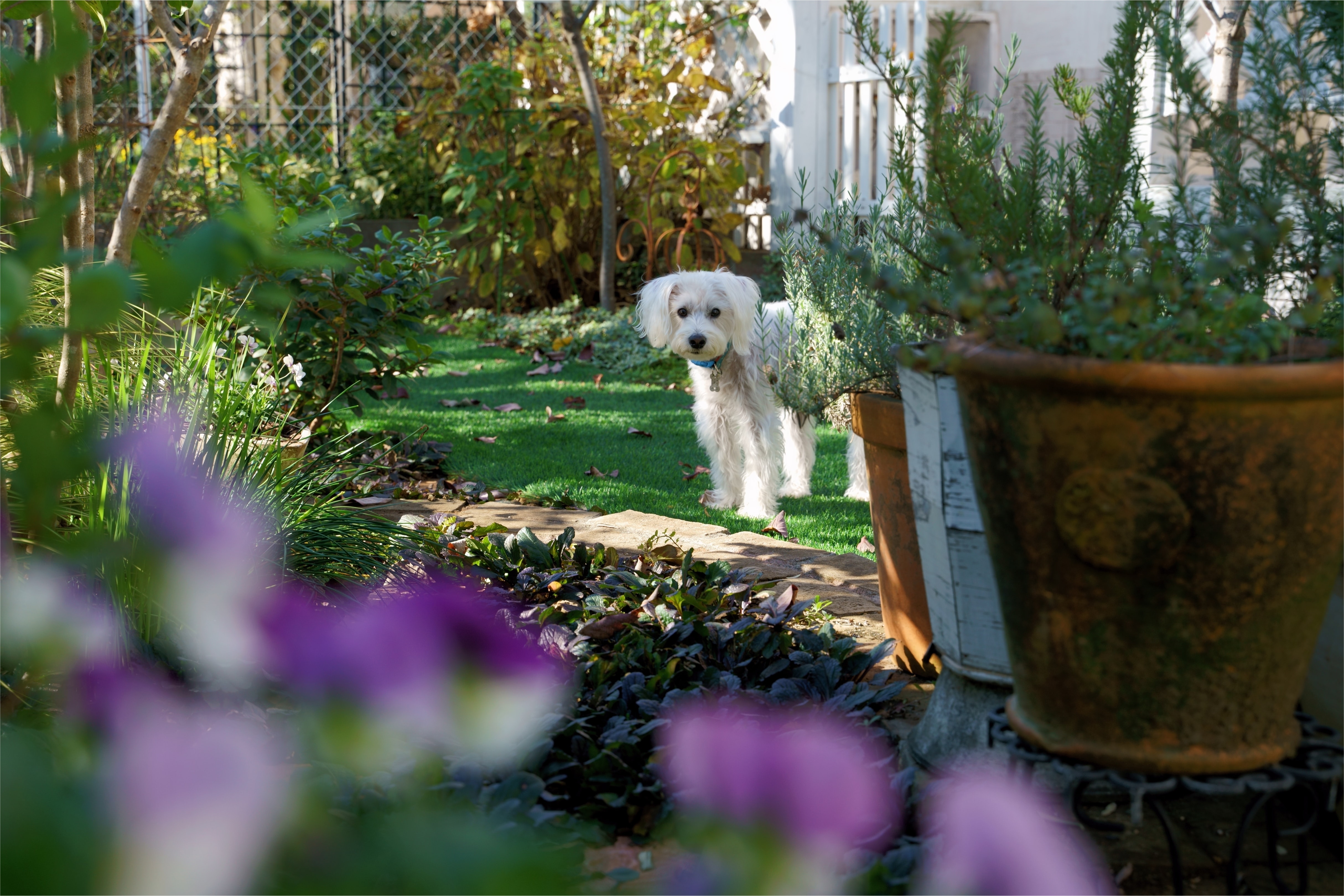Posted by Amy Wellcoat on Mar 02, 2021

It is that time of year again where we can start to look forward to spending more time outdoors and for many of us that will mean spending time in our gardens tidying up flower beds and maybe adding some new plants. However, March marks not only the beginning of spring, but it is also Pet Poison Prevention Month. There can be so many hazards in the garden for our dogs that we might overlook or be unaware of, but we're here to help.
Common Poisonous Garden Plants for Dogs:
- Bluebells
- Lilies
- Daffodil (bulbs)
- Elderberry
- Asparagus fern
- Avocado
- Azalea
- Bleeding heart
- Bracken
- Buttercup
- Lupin
- Onion
- Grapevines
- Raisins
- Jessamines
- Deadly nightshade
- Ragwort
- Wild cherry
- Oleander
- Clematis Marigolds
- Daffodil Bulbs
- Mother-in-Laws tongue
- Dahlias Nightshades – tomato plants
- Ferms Rhododendron
- Foxgloves Sweet Peas
- Germanium Wisteria
- Ivy Yew Trees – especially berries
And many more… Check out the rest of the list on Dogs Trust UK
Plants, Shrubs and flowers
There are many plants and shrubs which can cause your dog to become ill should they decide to eat or even just have a chew on either the leaves, stems or flowers and prevention is always better than dealing with the aftermath of an upset stomach or worse.
While adult dogs will often show little interest in your gardens foliage it can be worth checking which plants come up if you have a new puppy in your home or if you have recently moved house. If you are unsure what might be lurking in a garden then extra supervision may be needed and any suspect plants either fenced off or removed completely. I know my own gardening knowledge is somewhat limited when it comes to identifying some plants and a local garden centre can be a good port of call if you find yourself unsure of anything as they can often tell you what a plant is from a photo, flower or leaves.
Seeds and Bulbs
Unfortunately it is not just the flowers, stems and leaves that can cause problems for a curious dog with many seeds and bulbs also being toxic to some degree or another. Symptoms can range from sickness and diarrhoea in the case of ingested Lupin seeds through to life threatening complications should a dog eat a daffodil bulb.
Vegetable Gardens
For a foraging dog a vegetable gardens can also prove to be hazardous in terms of plants and also any feeds or fertilisers that might be used. Tomato plants, in particular the leaves and stem of the plant, can cause vomiting and diarrhoea along with painful stomach cramps while onions are known for being toxic for dogs.
Fallen fruit or produce, especially if it is over ripened can cause upset stomachs for a dog taking advantage of a free meal while compost heaps with a variety of food decomposing and mouldy food scraps can result in a neurological condition called Tremorgenic Mycotoxicosis.
Mulches
Often you will find mulches or chippings around flower beds and care needs that cocoa mulch isn’t used in a pet friendly garden as this like chocolate can be toxic for dogs. For puppies and some older dogs small stones or chippings will also be something they will pick up and swallow which can cause blockages needing veterinary attention.
Storage Areas
Garden sheds and garages will often contain a variety of hazards for dogs with substances such as slug pellets, ant powders, fertilisers, rat poisons, barbecue lighter fluids and other toxic products being stored inside and for some dogs these products may prove to be something worth investigating. It can take a relatively small amount to cause some very unpleasant and potentially serious issues so it is worth making sure your dog is unable to gain unsupervised access to these areas just in case.

Insects and other wildlife
Apart from the obvious sting insects such as wasps and bees, other creepy crawlies such as slugs and snails can also cause problems for dogs. For some curious dogs toads, frogs, slugs and other slimly creatures can cause some unpleasant affects should they come in contact with them with both slugs and snails potentially carrying the parasite lung worm. This can transmitted to dogs should they lick or eat these creatures or simply come in contact with a bowls, toys or other items left in the garden that an affected slug or snail has crawled across leaving a trail.
Bites from ants and spiders can cause irritation but general don’t cause significant problems for the majority of dogs however snake bites can be a different matter. In the UK we only have one venous snake, the Adder, so bites are fortunately fairly rare as snakes will only strike a dog if they feel threatened. Should your dog be unlucky enough to disturb an Adder and be bitten then you should seek immediate veterinary attention.
If you suspect that your dog has eaten something harmful either because you have caught them in the act or they are displaying symptoms such as:
- Vomiting and diarrhoea
- Excessive drinking
- Excessive salvation
- Shaking or trembling
- Seizures
- Skin irritation
- Breathing difficulties
- Collapse
Then you should contact your vet straight away to tell them you are on your way in with your pet, ideally taking a sample of the plant or substance they have ingested or come in contact with. Your vet will have access to the Veterinary Poisons Information Service a 24 hour emergency service who can advise the probably effects of a substance along with the best course of treatment.
If you think your dog might have swallowed something poisonous, you can also quickly check using the Vets Now poison checker. But if you have any urgent concerns please go straight to your vet.
Below is a list of some common plants which can be dangerous for dogs should they be consumed and more comprehensive lists can be found online on sites such as the Dogs Trust and the Animal Welfare Foundation.
You can find more information at:
www.dogstrust.org.uk
https://vpisglobal.com
